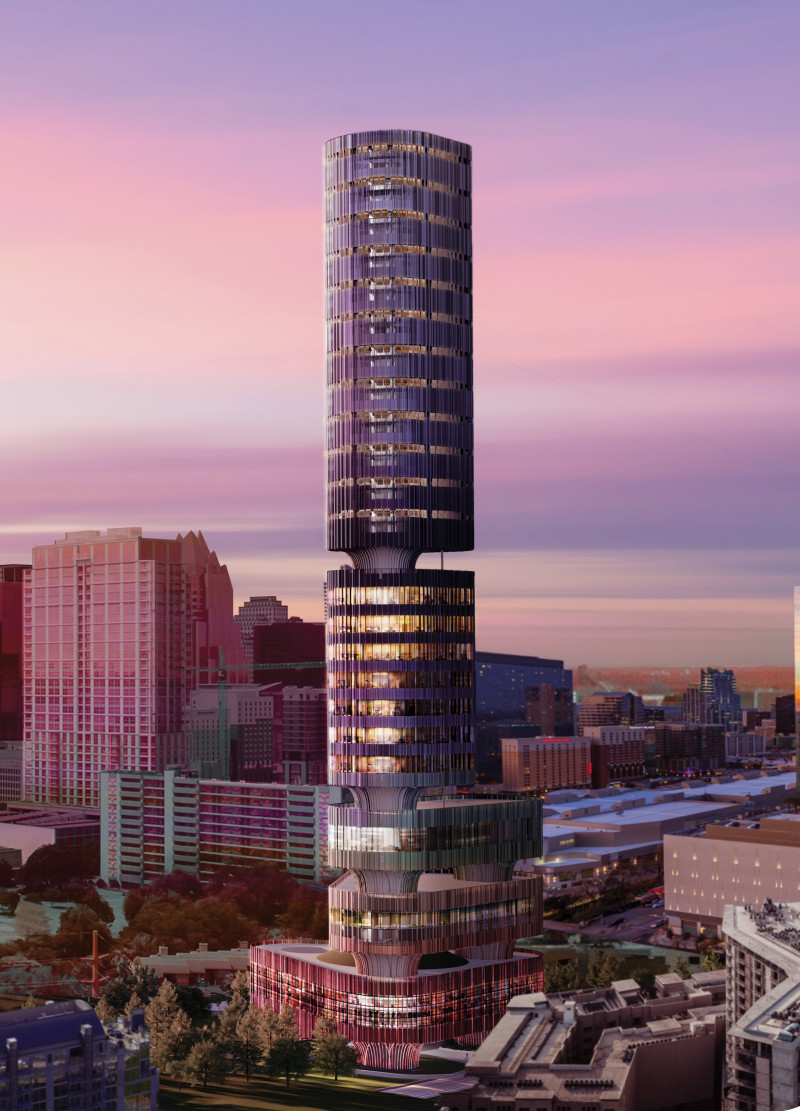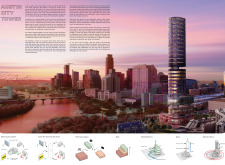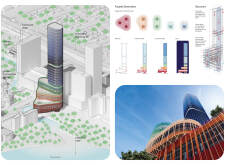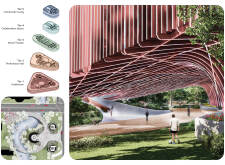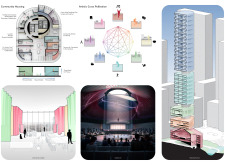5 key facts about this project
The design located in Austin, Texas, embodies the city's cultural scene and artistic energy. Renowned as the "Live Music Capital of the World," Austin experiences rapid transformation, requiring thoughtful design that maintains its unique character. The structure serves as a hub for creativity, blending areas for living, production, and performance to engage the community and encourage collaboration among artists.
Concept and Functionality
The design focuses on mixing various functions to create an environment that supports artistic expression. By bringing together different spaces, the goal is to promote creativity through interaction. This is not just a place for individuals to work; it is a center for collaboration among artists from different fields. A shared space fosters innovation and helps build a feeling of community among its users.
Architectural Form
The layout includes three main cores that provide stability to the structure, allowing segments to appear elevated. This effect is achieved through layered trusses that create a sense of lightness and movement. The way these layers interact not only enhances the building's overall appearance but also symbolizes the interconnected nature of art forms. Each level invites a dialogue, encouraging artistic collaboration and exploration.
Façade and Materiality
The façade features a vibrant transition from red at the bottom to blue at the top. This gradient brings an energetic quality that reflects the local artistic landscape. The choice of colors is purposeful; it enlivens the urban space and becomes part of the city’s visual story. The design intends to weave artistic expression into architecture, enhancing the character of the area surrounding it.
Community and Co-Living Spaces
With the aim of drawing artists back to downtown, the design includes co-living modules that promote collaboration. These flexible spaces allow for both private and shared work, helping to build a sense of community while still offering the necessary privacy individual creators sometimes need. This approach demonstrates a commitment to inclusivity, as it creates an environment where diverse artistic efforts can flourish.
The project integrates terraced forms that enhance the relationship with the natural environment. Visitors approaching the building are invited to experience performance spaces meant for public engagement. As they enter, they encounter artistic showcases that reflect Austin's rich cultural identity. Each detail contributes to a cohesive narrative that celebrates creativity and community.


